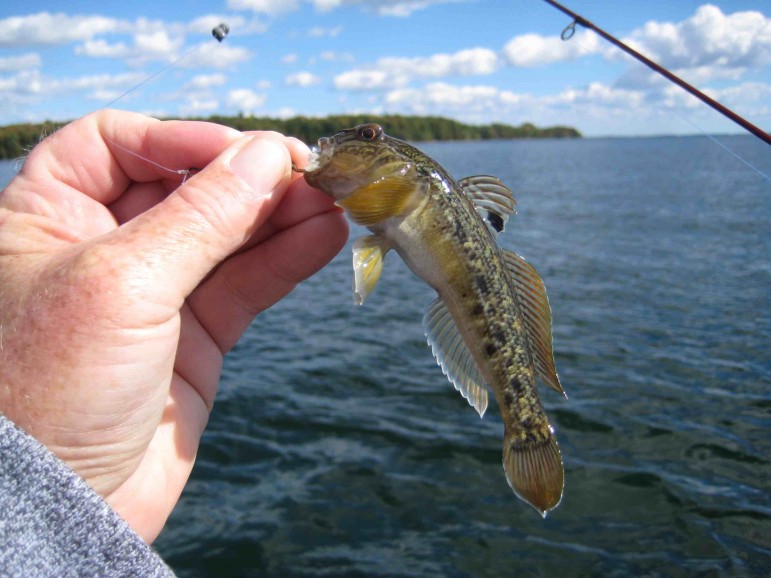By MOLLIE LISKIEWICZ
Capital News Service
LANSING – Not many of the Earth’s creatures can say that they’ve survived being chewed up and pooped out – but the ostracods of the Great Lakes can.
Ostracods – also known as seed shrimp – can survive getting eaten by the round goby, an invasive fish that comes from central Eurasia, according to a recent study.

Round goby are invasive to the Great Lakes. Image: Flickr.
The study, published in the “Journal of Great Lakes Research,” suggests that the round goby can eat small freshwater mussels, but are less well-adapted to feeding on other hard-bodied prey such as ostracods. In the study, 16.6 percent of the ostracods eaten by gobies were found alive after they were excreted.
The finding is important because if non-native and invasive prey survive getting eaten by gobies, then they could be spread as far as the fish swim.
The round goby was accidentally introduced by ballast water in the early- to mid-1990s, as were zebra and quagga mussels, said Seth Herbst, a fisheries biologist for the Department of Natural Resources.
One not-so-bad thing about the goby is that it eats these invasive mussels because they are part of their natural diet and “constantly in their face,” Herbst said.
“None passed through alive,” said biology professor Gregory Andraso of Gannon University in Pennsylvania and one of the study’s authors. The mussels make up about 92 percent of the round goby’s diet.
It also eats ostracods native to the Great Lakes. They have a tough, hard shell and seem able to hunker down to survive the shell-crushing pharynx of the round goby, Andraso said.
“Most of the time they crush up these things,” he said. Gobies usually swallow quagga mussels whole and let their pharynx go to work.
Round gobies have a “rapid, head-shake feeding style” which can pry mollusks off of rock surfaces, said Andraso.
Allen Mensinger, a University of Minnesota biologist, described the idea for the study at the 2011 International Association for Great Lakes Research meeting. Andraso had just published a study about the diet of round gobies in the Great Lakes, and Mensinger, hearing about other studies where those prey could survive through similar fish, simply asked if that possibility could be true of round gobies.
If prey eaten by gobies can survive, they have potential to be spread as far as the fish goes, which is bad if their prey is invasive elsewhere. Fish that spread prey like that are called “dispersive agents.”
The study suggested that the round goby could potentially act as a dispersive agent for other species because ostracods weren’t the only survivors.
A snail and some pea clams were also among the survivors, said Tyler Mack, a Gannon student involved in the study. However there were less than a handful of them.
It’s hard to say for certain whether round gobies can act as a dispersive agent for these hardy prey species though because they don’t travel too far out of their home range, he said
Mack is working on research now that’s looking into the survival of ostracods and other prey eaten by pumpkinseed sunfish. That study will provide a good comparison of the evolutionary apparatuses of the two fish, or the strength of their pharynxes at least, he said. Pumpkinseed sunfish travel longer distances, making them a better potential dispersal agent for surviving prey.
Mollie Liskiewicz writes for Great Lakes Echo.